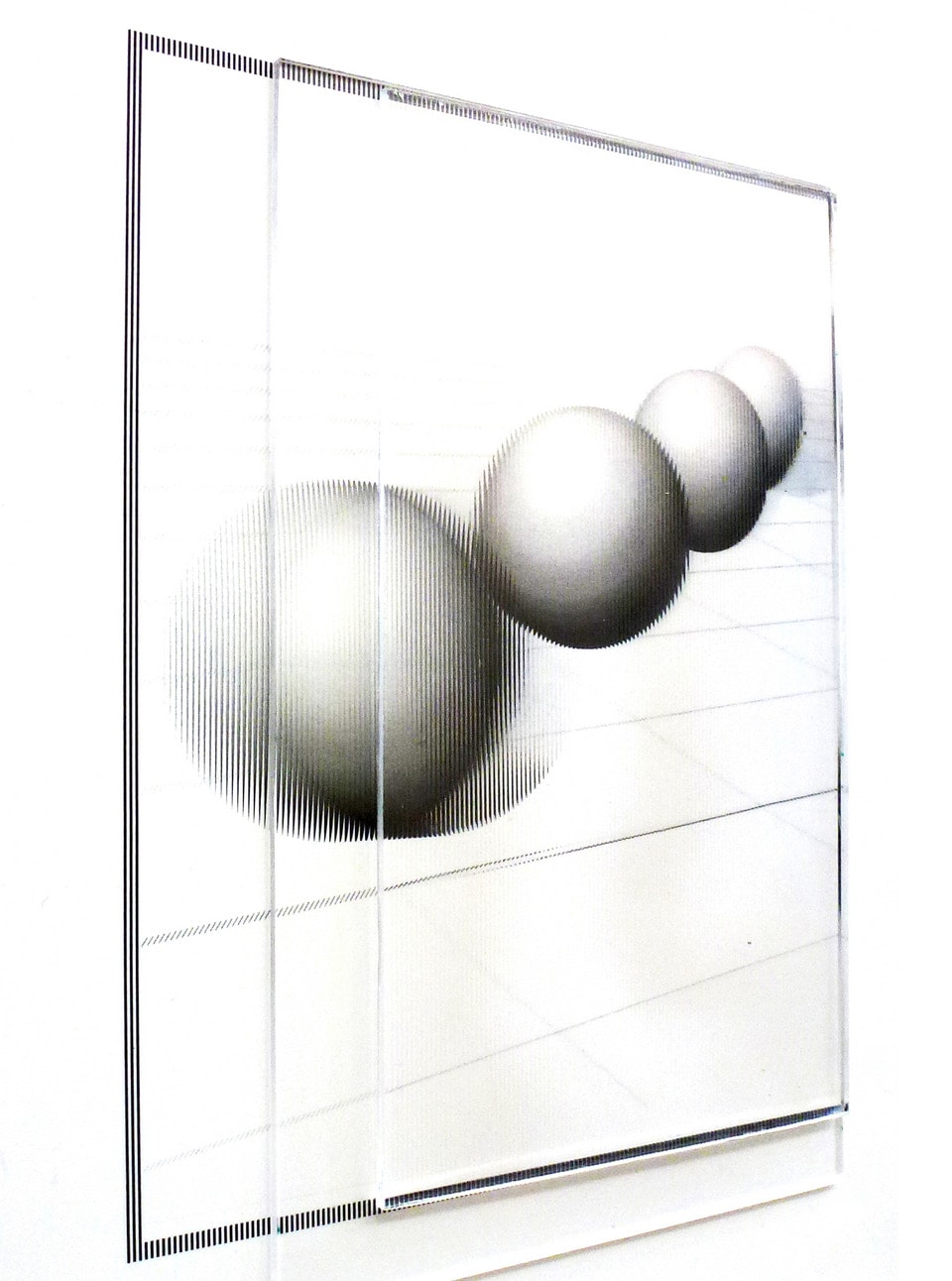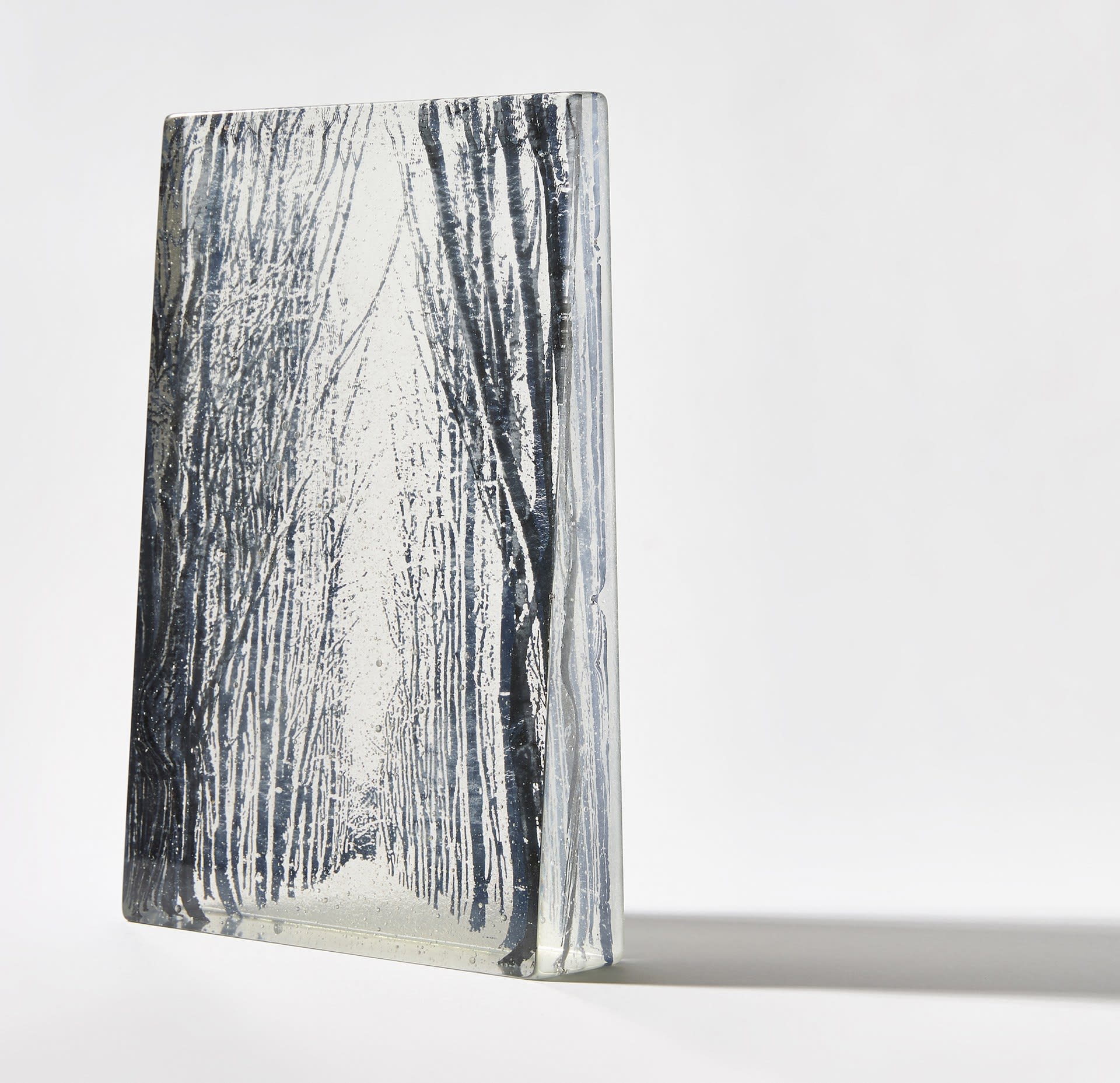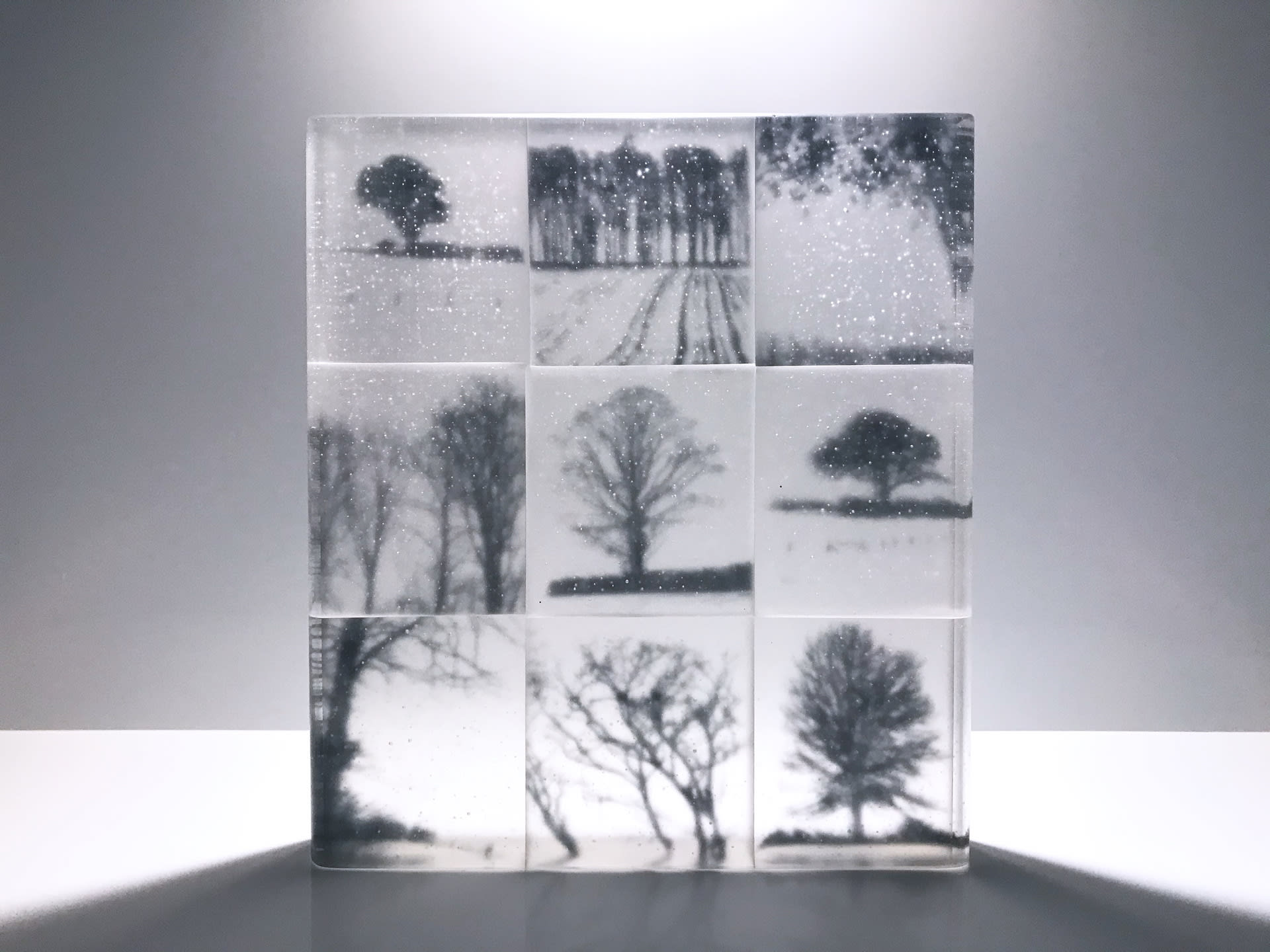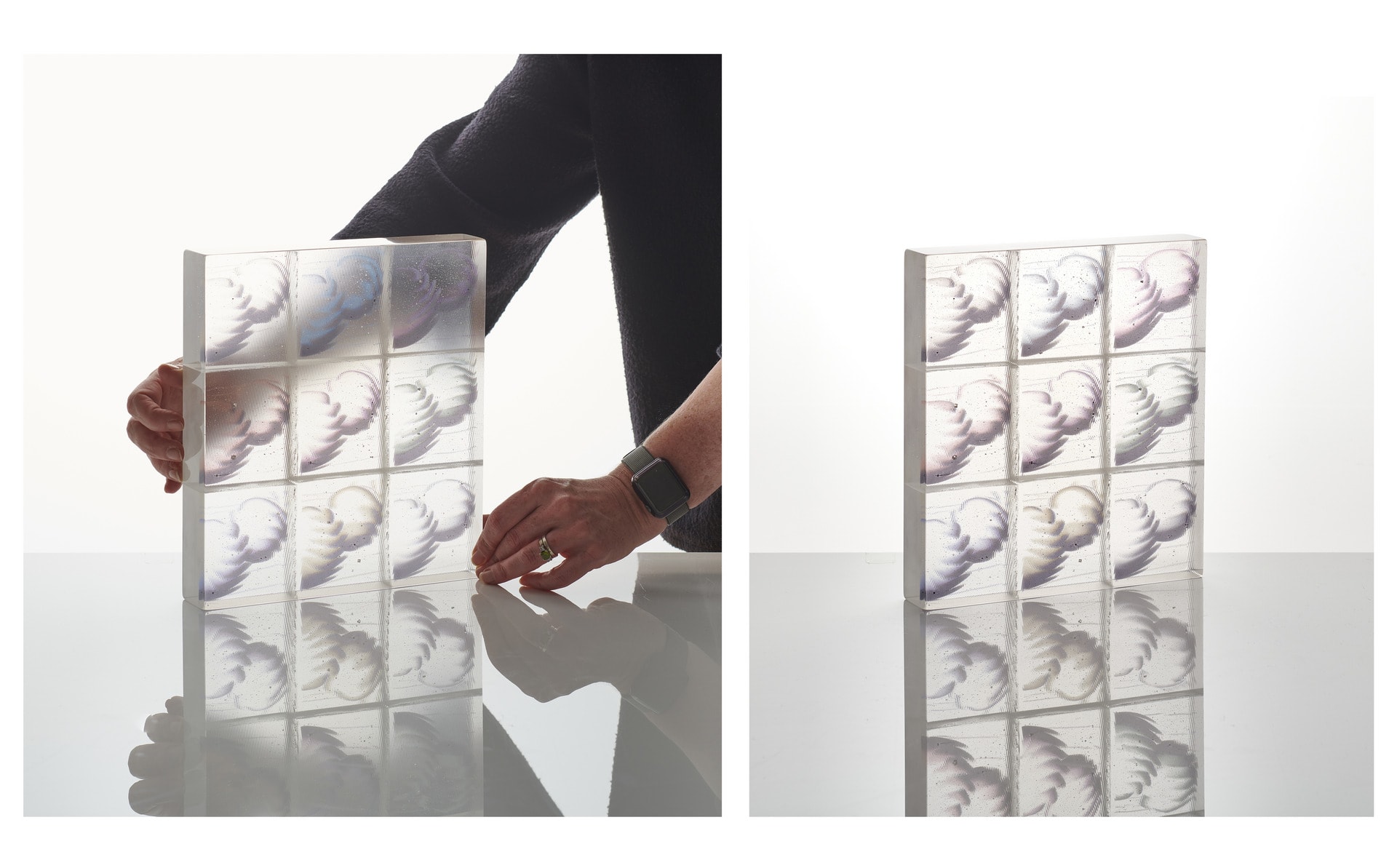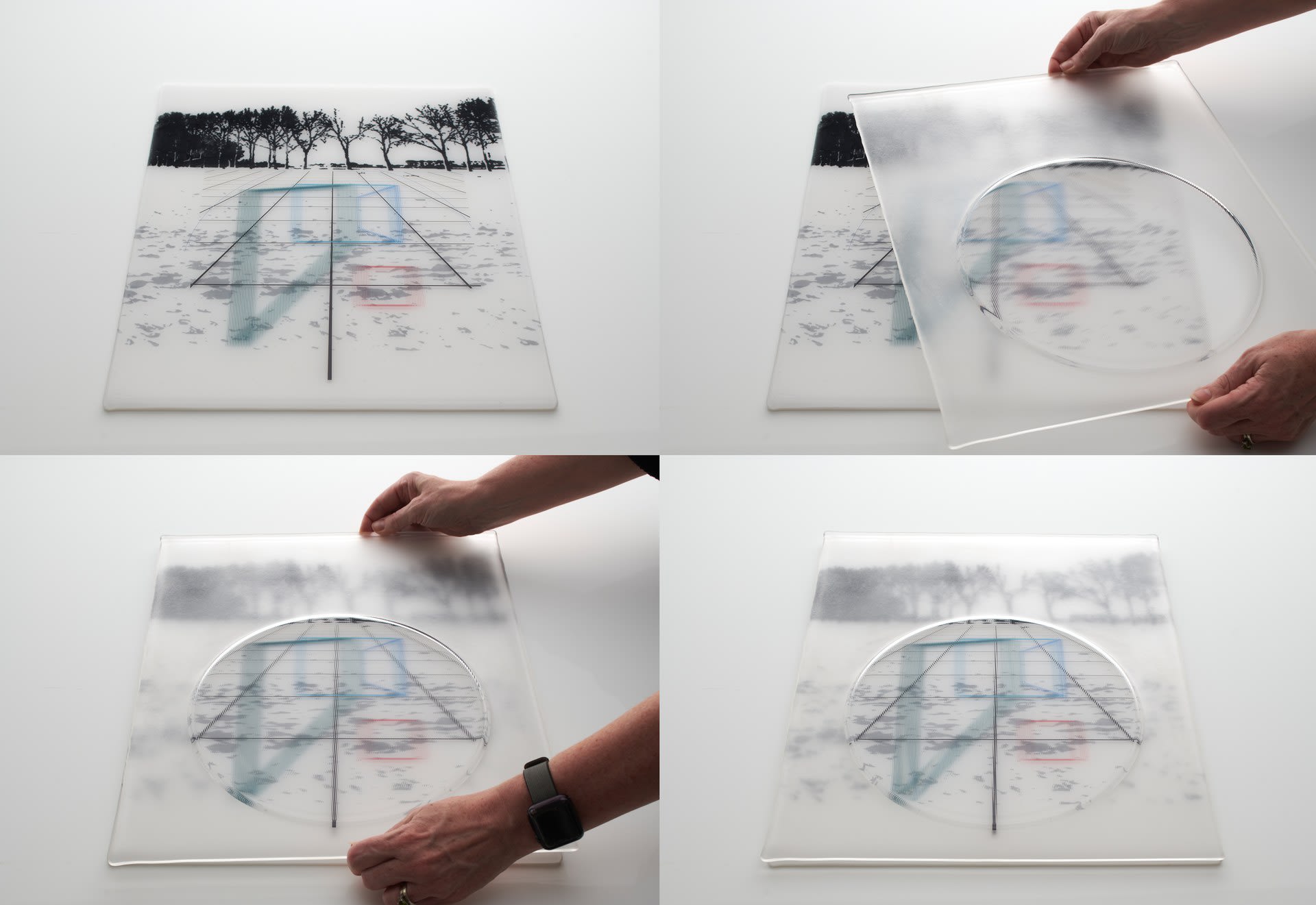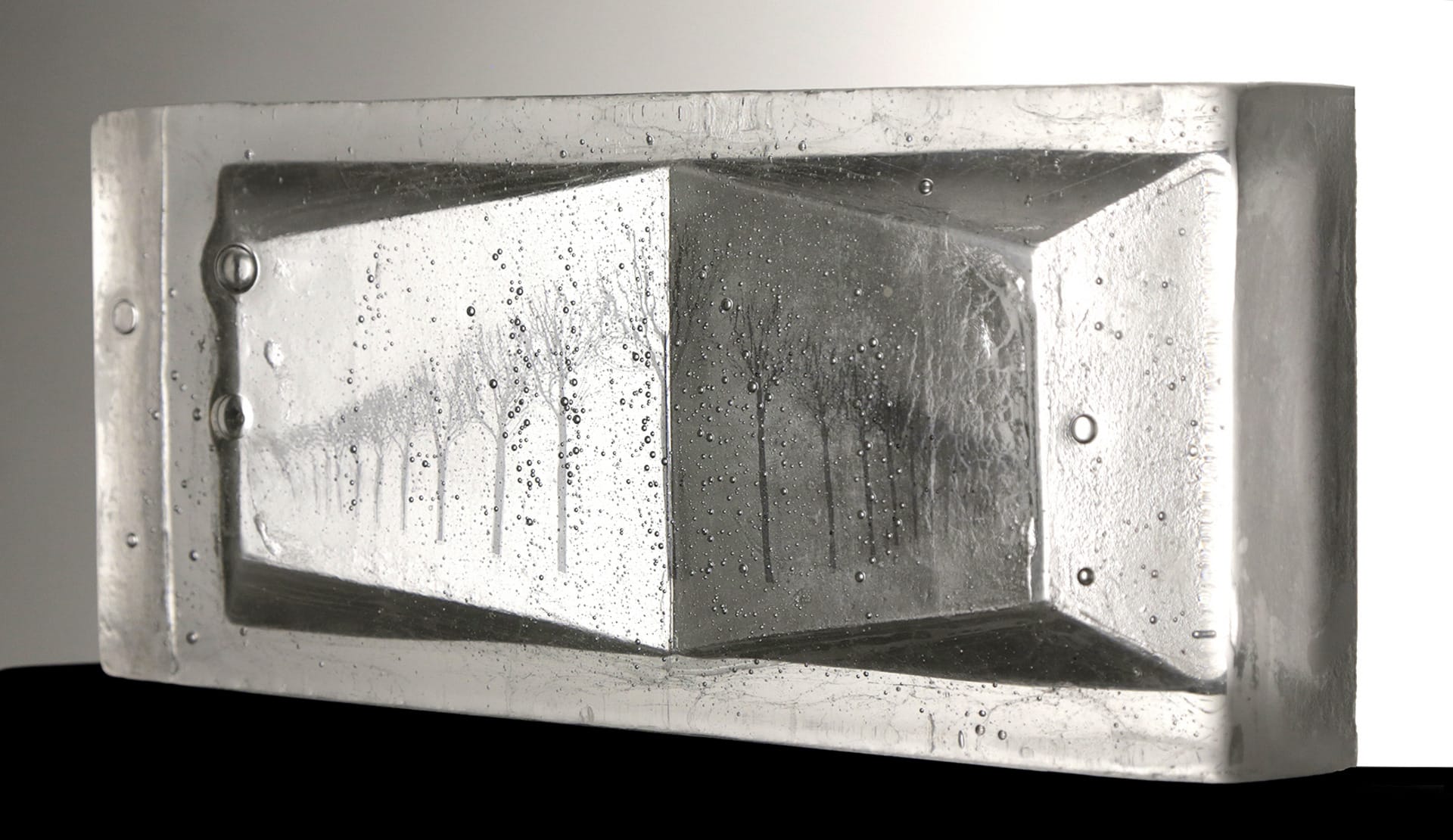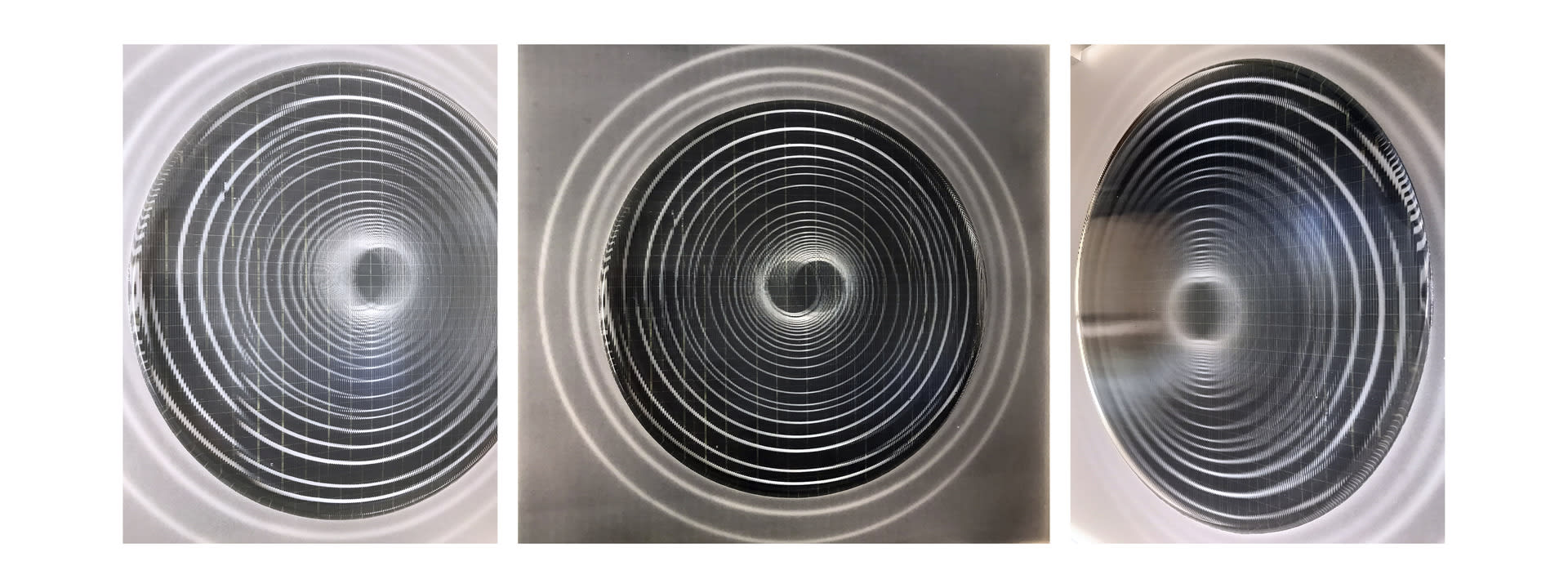PhD Research: Exploring the Optical Perception of Image Within Glass
Within the contemporary world, 3D film and television imagery is at the cutting edge of visual technology, but for centuries we have been captivated by the creation of visual illusions/allusions that play with our perception of the world, from the auto-stereoscopic barrier methods pioneered in the late 17th century by the French painter G. A. Bois-Clair to the ‘Op’ art movement of the 1960s and, more recently, Patrick Hughes’ ‘reverse perspective’ paintings.
By building on these new and old technologies I have extended my own practice, which engages with the 2D image as a 3D allusion/illusion in glass, by examining how this type of image can be created and perceived within glass. I have explored theories of optical perception in connection with the binocular recognition of depth and space, as well as kinetic clues to distance through motion parallax monitoring and assumptions about default linear perspective, light and inference within our personal schemata.
- ‘Optical illusion’ is used to mean an instance of a wrong or misinterpreted perception of a sensory experience; the distortion of senses revealing how the brain organises and interprets visual information; an individual’s ability to perceive depth, 3D form and motion.
- ‘Allusion’ is used to imply a symbolic or covert reference.
My practical research focuses on the perceived creation of the 3D image within glass and explores the notion of glass as a facilitator in working with and challenging the themes of 3D image perception. I have particularly addressed artistic spatial illusionary methods, reverse perspective techniques, auto-stereoscopic image-based systems, parallax stereograms and lenticular print and lens technology.
Through building on my previous practice of working with multiple-layered images within cast glass, combined with more complex and scientific optical methods, I have explored the perception of the image by working with new and old 3D technologies in order to produce a body of work which examines this perception within glass.
During my research I have developed an original casting process, a vacuum-casting lost wax process for glass, in addition to producing an accurate industry standard lenticular glass lens. This research intends to provide a theoretical basis for new glass working techniques, both within the glass artist’s studio and in the commercial world of print, towards applications within architectural design, installation art and image-based artwork in general.

